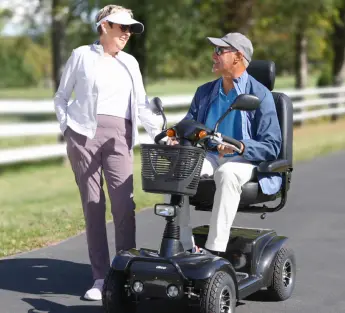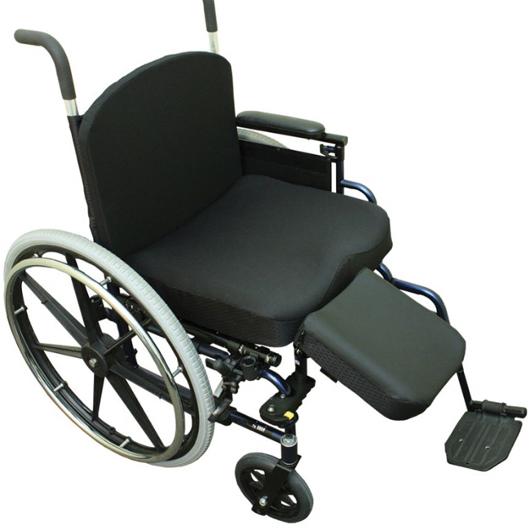Swing-Away Amputee Support
Quick-release swing-away hardware makes transfers quick and easy.



The SpinLife Difference Includes:
"Best on the Web" Return Policy
Swing-Away Hardware
Lifetime Limited Warranty
Made in the USA

Features
- Installs on left or right side
- Fits most wheelchair models
- Works with most wheelchair cushions
- Available in a standard 10" length or upgrade to 14" length
- Adduction pad helps center residual limb
Key Specs
- Weight capacity: 100 lbs.
- Weight: 1 lbs.
Manuals, Literature & Videos
Overview
The Comfort Company Swing-Away Amputee Support easily installs on most wheelchair models with tubing sizes from 7/8" to 1" in diameter. The quick release swing-away feature allows for easier transfers in and out of the wheelchair, while the toggle lever allows the Amputee pad to be positioned at multiple angles.
The Amputee pad is height adjustable up to four inches to accommodate different cushion sizes and can be depth adjusted up to three inches allowing the pad to work with wheelchair depth conversion kits. The foam cushion has a dual layer comfort layer; a soft entry layer for comfort and a firmer base layer for support. The pad cover is made from Comfort-Tek fabric that is fluid proof, easy to clean, multi-direction stretchable and has pressure alleviating properties.
Swing-Away Amputee Support Reviews
100% of reviewers recommend this
These reviews are from SpinLife customers who have purchased and used the Swing-Away Amputee Support.
Customer Reviews
Showing:
Warranty Information
The Comfort Company products are guaranteed for life against manufacturer's defects. We will gladly repair or replace any products at no charge to you.
Return Policy
- The following conditions apply:
- This item has a 20% Restocking Fee.
- You are responsible for the cost of return shipping. The product must new and unused and in the original packaging.
- All accessories and items that were included in the box must be returned.
- Items canceled after the product has already shipped will be considered a return.
- Delivery and service fees are not refundable.
- Mattresses ordered with beds are non-returnable.
- Custom-made by the manufacturer to suit your specific needs are non-returnable.
- An RA (Return Authorization) from SpinLife must be requested within 30 days of delivery.
- The item must be shipped back to the address noted on the RA within 15 days.
- Once approved, your refund, minus any restocking and freight fees, will be issued to your original form of payment.
If you have questions about this item please call a SpinLife Expert at 1-800-850-0335.





 Contact Us
Contact Us
 M-F 9am - 6pm ET
M-F 9am - 6pm ET
 Request parts
Request parts Request Service
Request Service

